The experts in boutique travel To Peru and South America
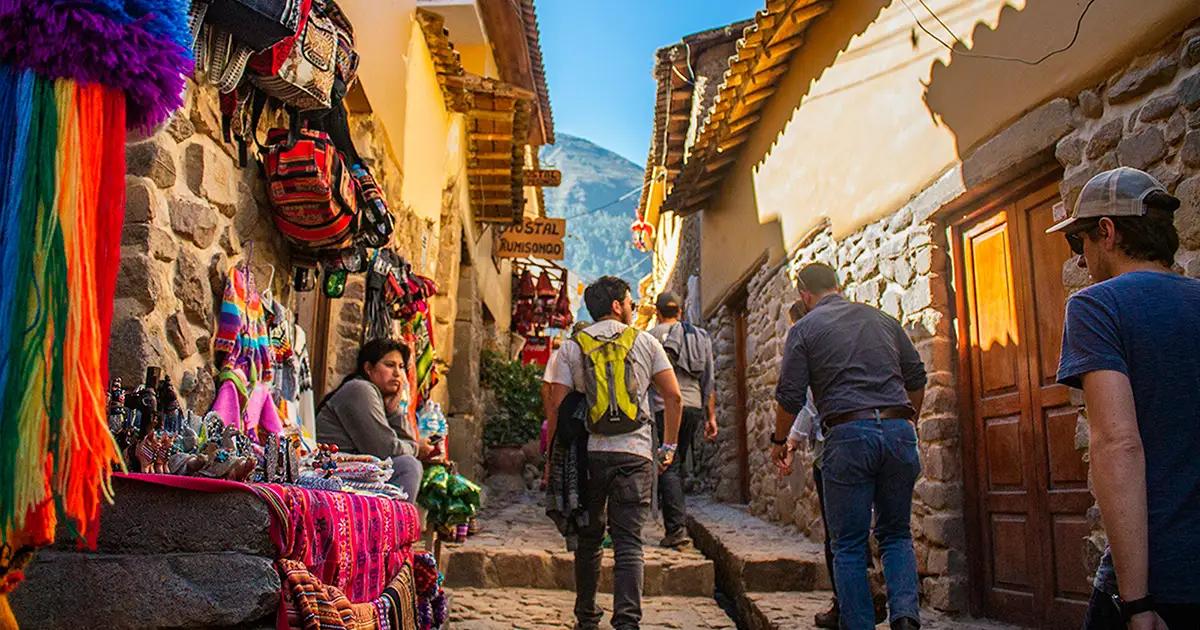
With so much to explore, deciding what to do in Cusco can be challenging, so to help you plan, we've compiled a list of our top ten things to do in Cusco. Whether you're interested in archaeology, adventure, or simply soaking up the local atmosphere, Cusco offers a diverse array of unforgettable experiences. Get ready to immerse yourself in the rich culture and history of this fascinating city!
Sacsayhuamán is an ancient Inca archaeological site located on the outskirts of Cusco, Peru, recognized as a World Heritage Site by UNESCO in 1983. Perched atop a hill, Sacsayhuamán is a short drive or an exhilarating hike from the center of Cusco. This impressive fortress consists of massive stone walls built from large limestone boulders, meticulously fitted together without mortar.
Sacsayhuaman served as a ceremonial fortress during the Inca Empire. Later, the Spaniards utilized stones from Sacsayhuaman to construct their own buildings. Today, Sacsayhuaman draws numerous visitors from both local and international locations. It also serves as the focal point for the annual reenactment of Inti Raymi, or the "Festival of the Sun," held every June 24th. This Incan ceremony commemorates the winter solstice.
The site offers panoramic views of Cusco and the surrounding mountains, showcasing the advanced engineering skills of the Inca civilization. Visitors can explore the complex network of zigzagging walls, terraces, and ceremonial platforms, gaining insight into the strategic and ceremonial importance of Sacsayhuamán in Inca history. To explore Sacsayhuaman, visitors require a visitor’s ticket (boleto turístico) for entry. This ticket also grants access to nearby sites such as Qenko, Tambomachay, and Puka Pukará. Sacsayhuaman is not only a highlight of Cusco but also a must-see attraction in Peru!
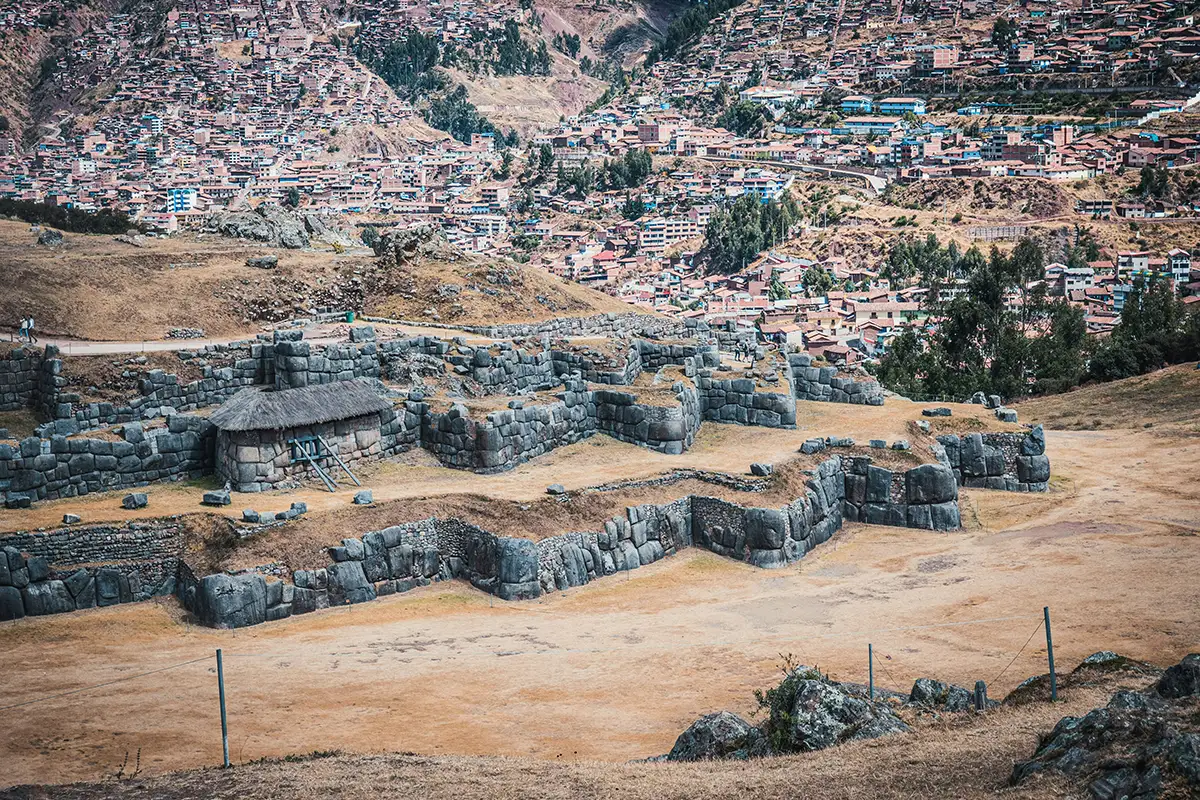
The ancient Inca fortress of Sacsayhuaman. Photo by Ruben Hanssen on Unsplash.
The Cusco Cathedral, officially named the Cathedral Basilica of the Assumption of the Virgin, is a majestic example of Spanish colonial architecture located in the heart of Cusco, Peru. Perched atop a flight of stone steps overlooking the Plaza de Armas, it stands as a stronghold of the Roman Catholic religion.
Built in the 16th century from 1560 to 1654 on the foundations of an Inca palace, the cathedral showcases intricate Baroque, Renaissance, and Gothic influences. Its façade is adorned with ornate carvings and impressive colonial artwork. Inside, visitors can admire a vast collection of colonial paintings, sculptures, and religious artifacts, including the renowned painting of the Last Supper by Marcos Zapata, which depicts the apostles dining on guinea pig, a local delicacy.
The cathedral's historic significance and stunning craftsmanship make it a captivating cultural and religious landmark in Cusco, and visitors to Cusco should not miss this gem!
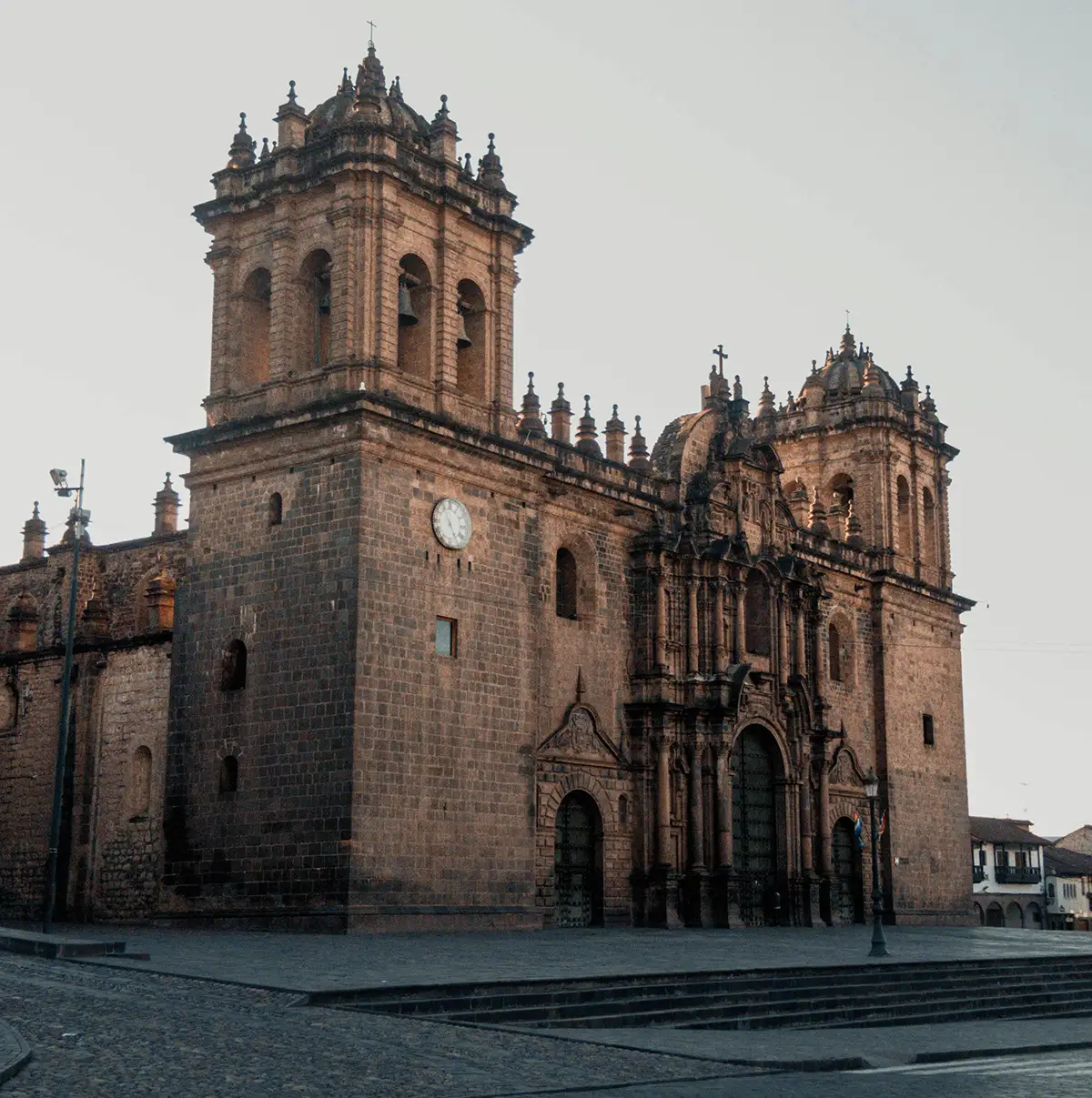
The Cusco Cathedral, an architectural gem of the Andes. Photo by Cristian Joaquin Pezo Guevara on Pexels.
Surrounded by impressive colonial architecture and significant landmarks, the Plaza de Armas (main square in English) in Cusco, Peru, remains the historic and cultural heart of the city, a role it has held since its days as the former Incan capital.
This square is home to the imposing Cusco Cathedral and the Church of the Society of Jesus (Iglesia de la Compañía de Jesús), as well as arcades, shops, restaurants, and cafes. Perched atop a centuries-old fountain in the center is the Inca statue, added in 2011. The golden figure extends his arm over Cusco’s historic center, serving as a reminder of the Incan origins upon which the Spanish built their colonial square. The plaza buzzes with activity throughout the day and night. Vendors offering a variety of items wander the historic streets, from 5 soles photos and selfie sticks to ponchos and umbrellas for rainy days.
To experience the historic square in its full festive spirit, visit during New Year's Eve. This lively occasion in Cusco is one of the most vibrant events of the year. Locals dash around the square with suitcases, a tradition believed to bring travel opportunities in the coming year. Fireworks illuminate the entire city, creating a sparkling spectacle that marks the celebration.
Whether you visit during New Year's or any other time, Cusco's Main Square promises an unforgettable experience. As a gathering place for both locals and tourists, it offers a vibrant atmosphere and abundant opportunities to immerse yourself in the city's rich history and lively culture!
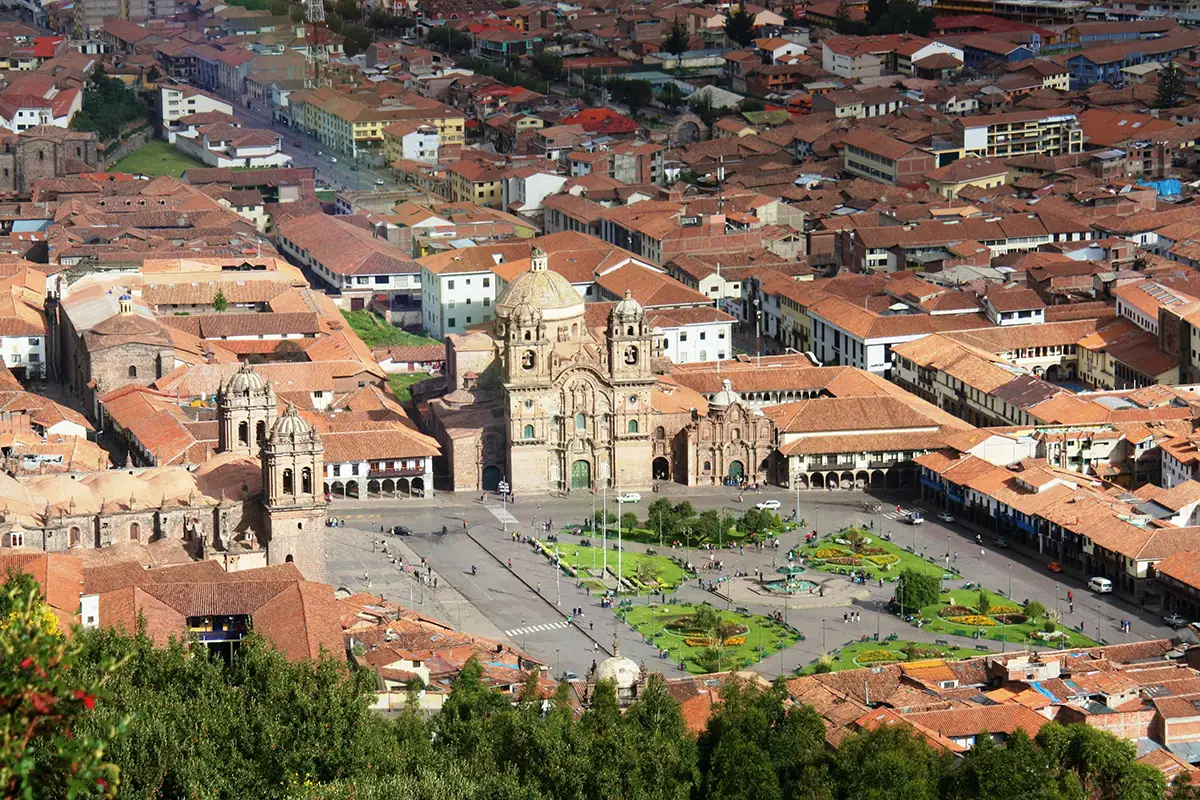
The Cusco Plaza de Armas, or Cusco Main Square in English. Photo by Deb Dowd on Unsplash.
Qorikancha (also spelled Koricancha, Qoricancha, or Coricancha), meaning "Golden Temple" in Quechua, was once the esteemed Temple of the Sun during the Inca era. Today, it stands as an archaeological site in Cusco, Peru, where the blend of Inca and Spanish colonial architecture is prominently displayed.
For the Inca Empire, it was one of the most important temples, as the Incas dedicated it to their sun god, Inti. However, the conquering Spanish often built churches on top of Incan temple foundations, and the site's original splendor, adorned with gold and dedicated to the sun god Inti, was overlaid with the Santo Domingo Convent after the Spanish conquest.
This blend of Inca stonework and Spanish colonial style creates a unique cultural and historical landmark, offering visitors insight into the complex intertwining of Inca and Spanish cultures and religions during the colonial period in Peru. Inside the convent, visitors can explore ornate chapels, cloisters, and courtyards adorned with colonial art and artifacts.
Together, Qorikancha and the Santo Domingo Convent provide a comprehensive view of Cusco's cultural evolution from Inca capital to Spanish colonial city and are definitely worth visiting for anyone interested in history, architecture, and the cultural blend of Inca and Spanish influences.
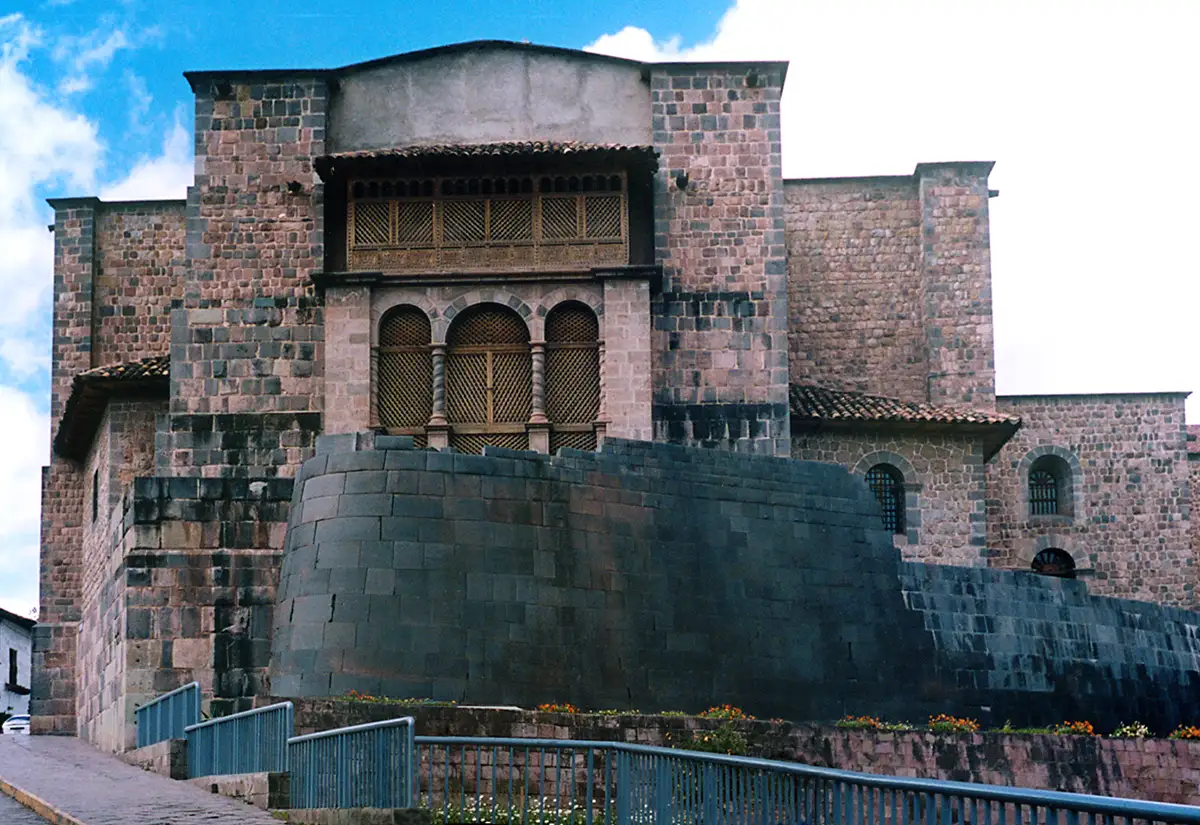
Qorikancha and Santo Domingo Convent. Photo by Håkan Svensson (Xauxa), under the CC BY-SA 3.0 <http://creativecommons.org/licenses/by-sa/3.0/> license, via Wikimedia Commons
San Blas, nestled in the heart of Cusco, is a charming neighborhood known for its narrow cobblestone streets, colonial architecture, and artistic ambiance. It is also home to numerous artisan workshops, galleries, and quaint cafes, and offers a glimpse into Cusco's rich cultural heritage and vibrant local life.
It is conveniently located just a few blocks from Cusco’s main square; however, reaching it involves navigating a steep incline that can be challenging, especially when still acclimating to the altitude. Once acclimated and prepared for the climb, visiting the San Blas neighborhood is unquestionably worth it. Its hilly streets are adorned with picturesque cobblestones and lined with white-painted colonial buildings. Here, you'll discover Cusco’s oldest parish church, the San Blas Temple, showcasing a stunning hand-carved cedar pulpit.
Strolling through its narrow streets, you'll find unique handmade jewelry and crafts. Often called Cusco’s balcony, San Blas offers an incredible view of the historic center below. Whether you prefer admiring it from a bench in the main plaza or relaxing in a cozy restaurant or bar, the charm of San Blas is undeniable. For those wishing to extend their stay, San Blas hotels are among the most enchanting places to stay in Cusco.
Whether wandering through its bustling markets or enjoying a quiet moment in a picturesque plaza, San Blas invites travelers to experience the authentic charm of Cusco's artistic and cultural hub.
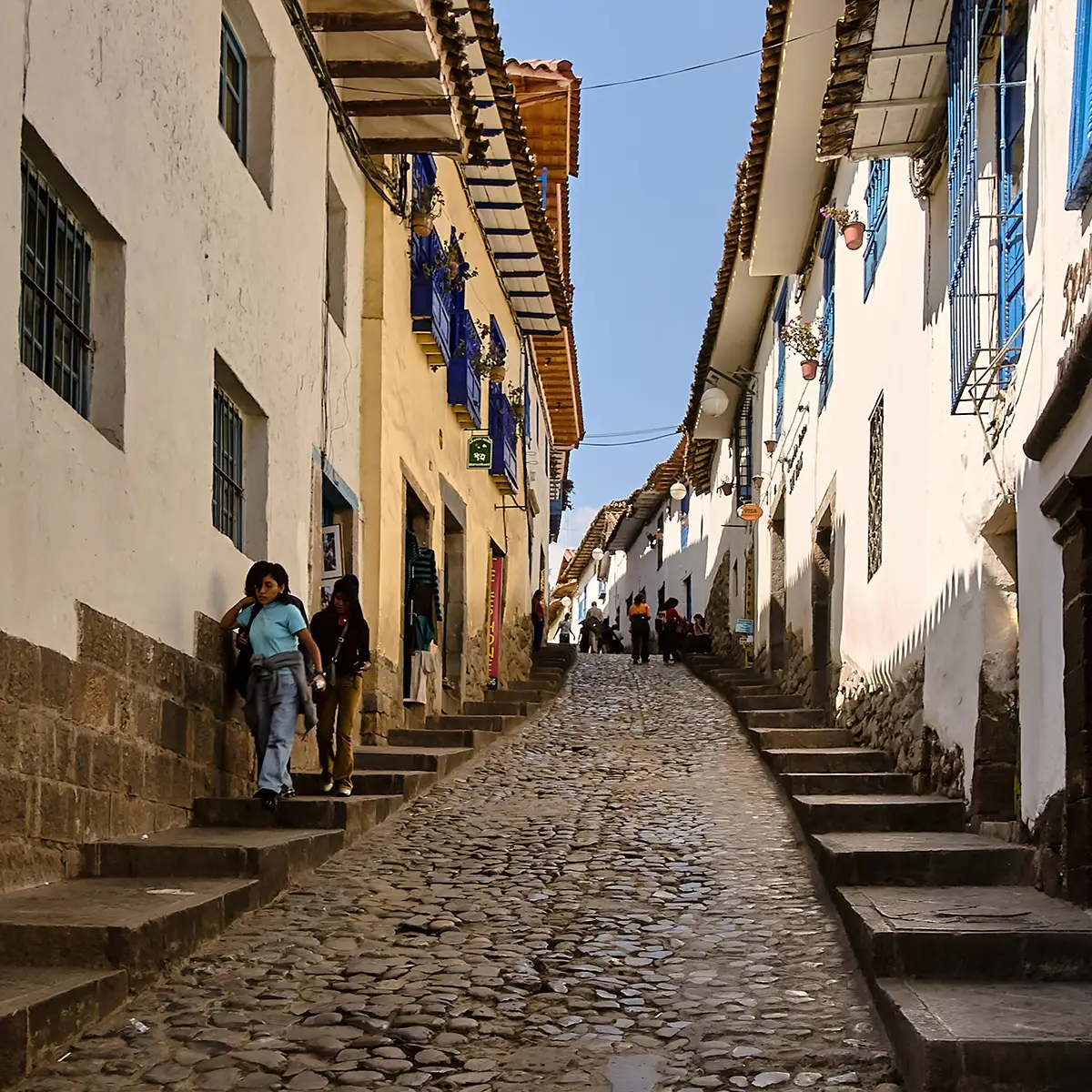
One of the narrow cobblestone streets in the San Blas neighborhood. Photo by Pedro Szekely from Los Angeles, USA, under the CC BY-SA 2.0 <https://creativecommons.org/licenses/by-sa/2.0> license, via Wikimedia Commons
No Cusco vacation is complete without visiting San Pedro Market in Cusco, which is a vibrant and sensory experience. This bustling market, located a short walk from the main square, is a hub of local culture and daily life. As you wander through its aisles, you'll encounter a colorful array of fresh produce, exotic fruits, traditional Andean foods, and an assortment of handcrafted goods.
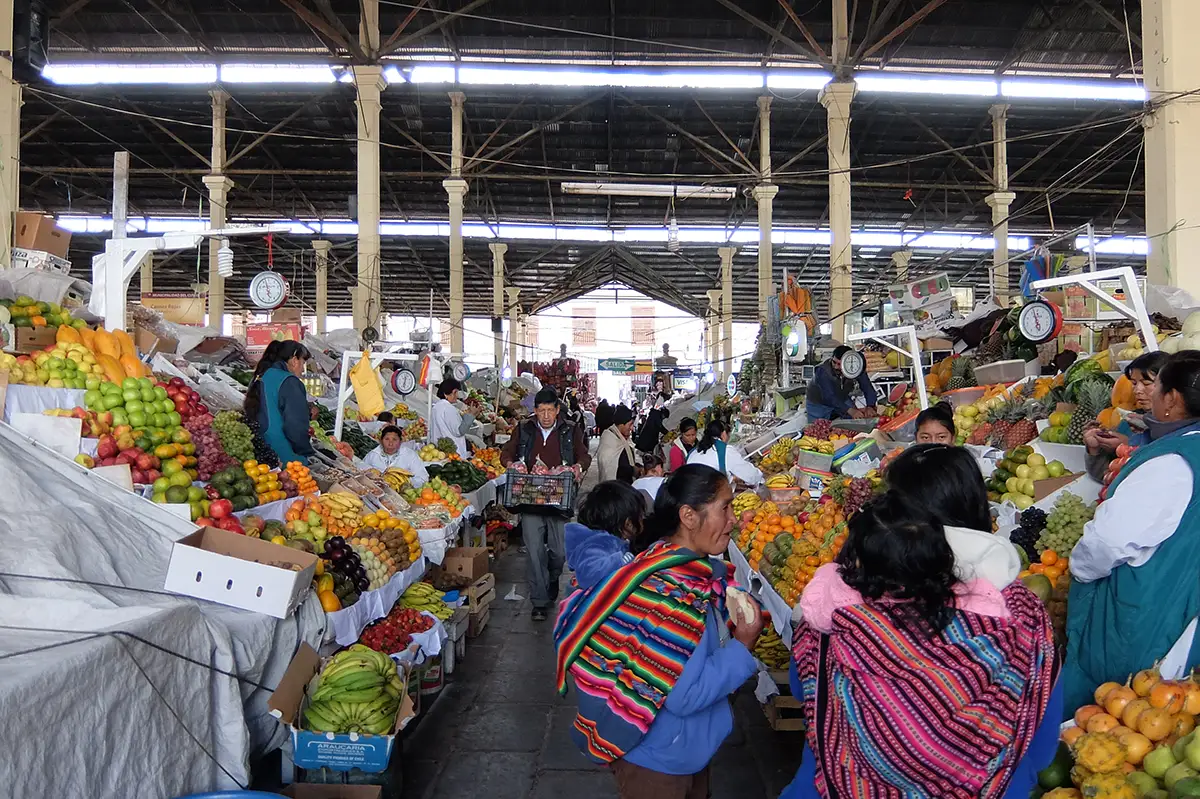
You'll encounter a colorful array of fresh produce and exotic fruits. Photo by Kuruman from Tokyo, Japan, under the CC BY 2.0 <https://creativecommons.org/licenses/by/2.0> license, via Wikimedia Commons
The market's lively atmosphere is filled with the sounds of vendors calling out their wares and the mingling aromas of spices and freshly prepared street food. If you've just arrived, you can pick up some local fruits and cheese to snack on during your day trips from Cusco. You might also want to take home specialty grains like quinoa and chia at the end of your journey. Even if you’re not planning to buy anything, wandering through the market’s many aisles is well worth it. You'll discover a vibrant array of colors, smells, and textures that capture the essence of the local fare.
Visiting San Pedro Market offers a great opportunity to take a break from hiking Cusco’s hilly streets and let your taste buds do the exploring. Sample local dishes such as fresh lomo saltado, a stir-fried beef dish, and hot quinoa soups, both of which are delicious and affordable. The market also features irresistible homemade flavors. Don't miss the chance to try fresh juice made from unique Peruvian fruits like lúcuma, granadilla, and chirimoya.
San Pedro Market offers an authentic glimpse into Cusco's culinary traditions and local craftsmanship, making it a must-visit destination for any traveler!
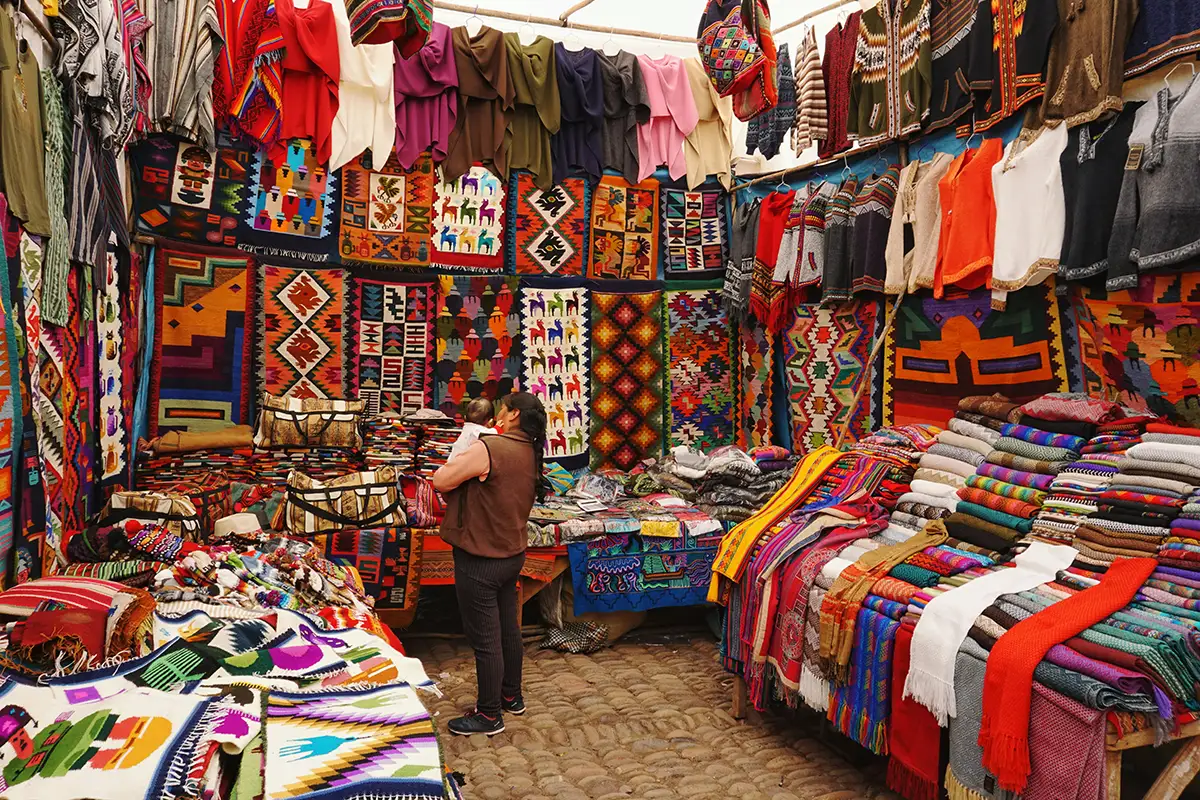
A vendor selling fabrics in the San Pedro market. Photo by Peter Livesey on Unsplash.
Explore the rich heritage of the Inca civilization at the Inca Museum in Cusco. The museum building, which rests on Inca foundations, is located in a colonial-era mansion and houses an impressive collection of artifacts, including pottery, textiles, and ceremonial items, showcasing the ingenuity and artistic prowess of the ancient Incas.
Gain insights into their culture, architecture, and daily life through exhibits that highlight their engineering marvels and spiritual beliefs. A visit here offers a fascinating glimpse into one of the world's most advanced ancient civilizations, making it a must-see for history and archaeology enthusiasts and anyone who is interested in the ancient cultures of Peru.
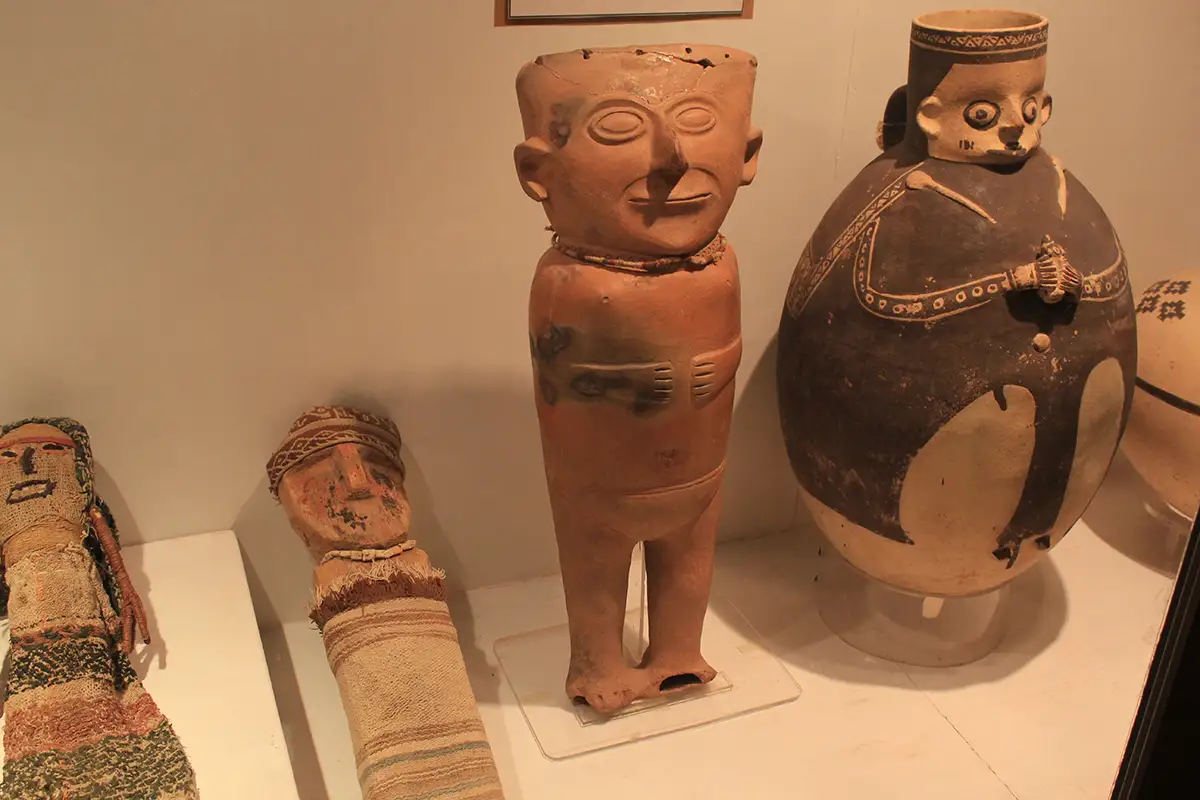
Clay artifacts in the Inca Museum. Photo by Laslovarga, under the CC BY-SA 4.0 <https://creativecommons.org/licenses/by-sa/4.0> license, via Wikimedia Commons
Immerse yourself in the lively cultural tapestry of Peru by attending a traditional Peruvian dance show in Cusco. Delight in the rhythmic beats and intricate movements of dancers adorned in colorful costumes, each performance weaving stories of ancient rituals, celebrations, and legends.
You can watch a traditional dance show in Cusco at various venues that specialize in showcasing Peruvian culture. Popular places include:
These venues provide opportunities to immerse yourself in the vibrant cultural heritage of Peru through dance, music, and storytelling. Whether it's the spirited Marinera from the coast or the powerful Huayno from the highlands, each dance reflects the diverse heritage of Peru's regions.
Set against the backdrop of Cusco's historical charm, this cultural experience promises an unforgettable evening celebrating the country's rich traditions and artistic expressions.
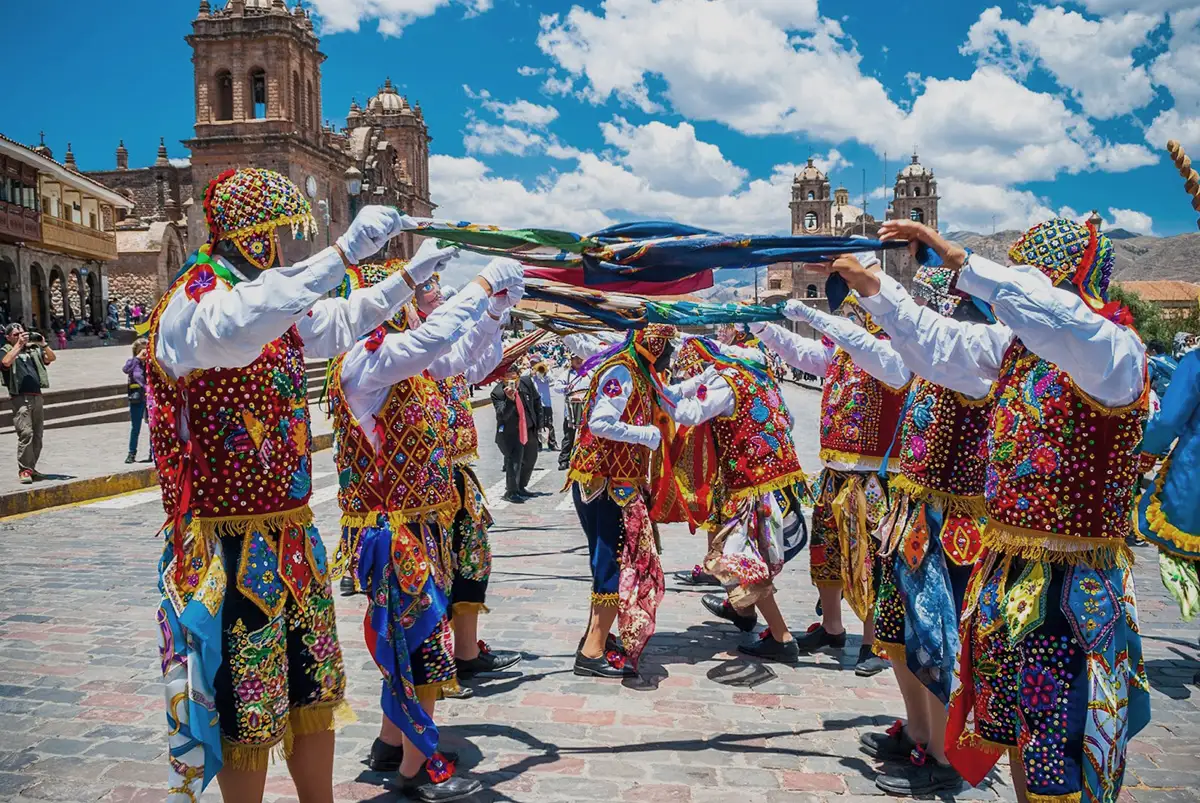
The spirited Marinera dance being performed. Photo by Caroline0409, under the CC BY-SA 4.0 <https://creativecommons.org/licenses/by-sa/4.0> license, via Wikimedia Commons
Learn the art of Peruvian cuisine firsthand with a cooking class in Cusco, where you can delve into the flavors and techniques that define this vibrant culinary tradition.
Under the guidance of skilled chefs, you'll discover the secrets behind iconic dishes such as ceviche, lomo saltado, and causa rellena. From selecting fresh ingredients at local markets to mastering cooking methods unique to Peru, this immersive experience offers a hands-on opportunity to savor and create authentic Peruvian flavors.
Whether you're a seasoned chef or a culinary enthusiast, a cooking class in Cusco promises to be a delicious highlight of your travel adventure.
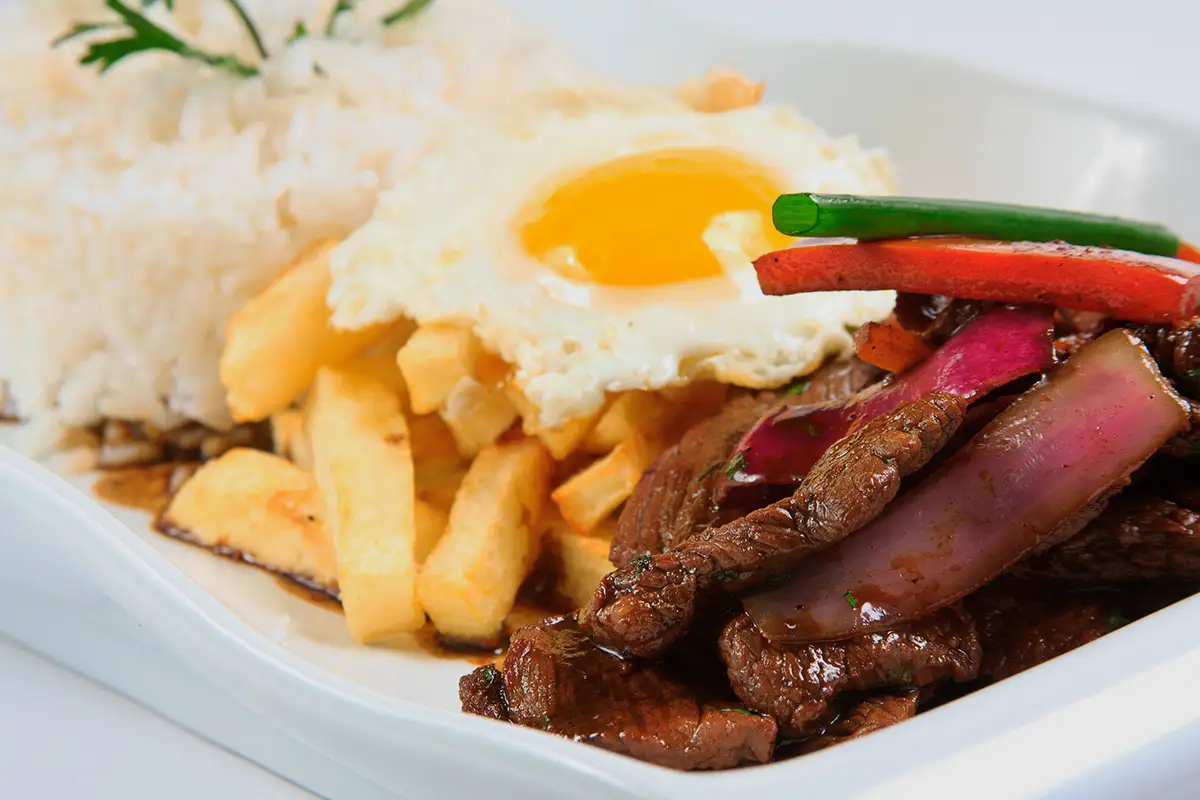
The iconic lomo saltado dish. Photo by Luigie Guissepe Marin Astete on Pexels.
Experience Inti Raymi, the ancient Inca Festival of the Sun, an extraordinary celebration that honors the winter solstice and pays homage to Inti, the Sun God, who was considered the most important deity in the Inca religion.
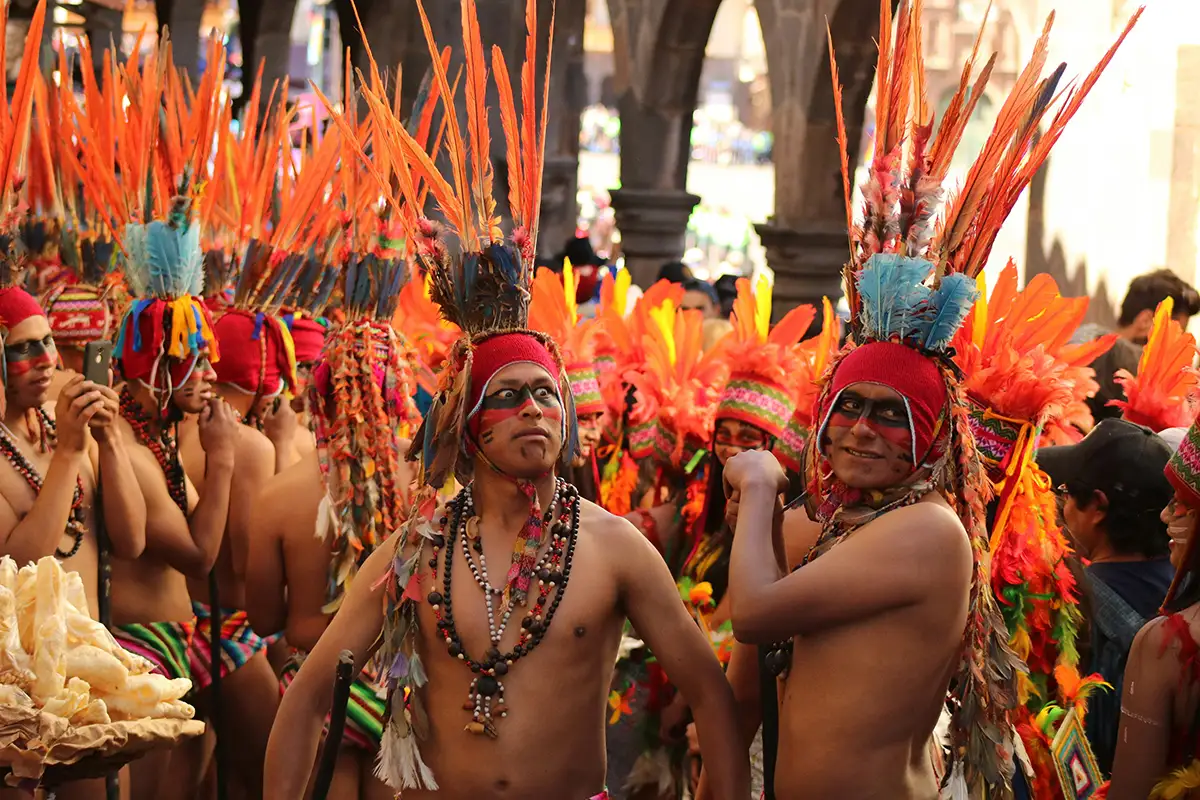
A representation of the jungle tribes that accompanied the Inca leader during the festival of the Sun. Photo by Renny Gamarra on Unsplash.
Inti Raymi was suppressed by the Spanish conquistadors but was later revived in the mid-20th century and is now a major cultural event in Peru, attracting both locals and tourists alike to witness its vibrant celebrations and cultural significance. Held annually in Cusco on June 24th, this vibrant festival rekindles ancient Inca rituals and traditions through colorful processions, traditional music, and elaborate ceremonies performed by costumed actors portraying historical figures.
Witness the mesmerizing spectacle as participants gather at the historic Sacsayhuaman archaeological site, where rituals include offerings to Pachamama (Mother Earth) and the symbolic reenactment of Inca beliefs and customs. Inti Raymi offers a profound glimpse into Peru's rich cultural heritage and spiritual connection to the sun, making it a captivating experience for visitors from around the world.
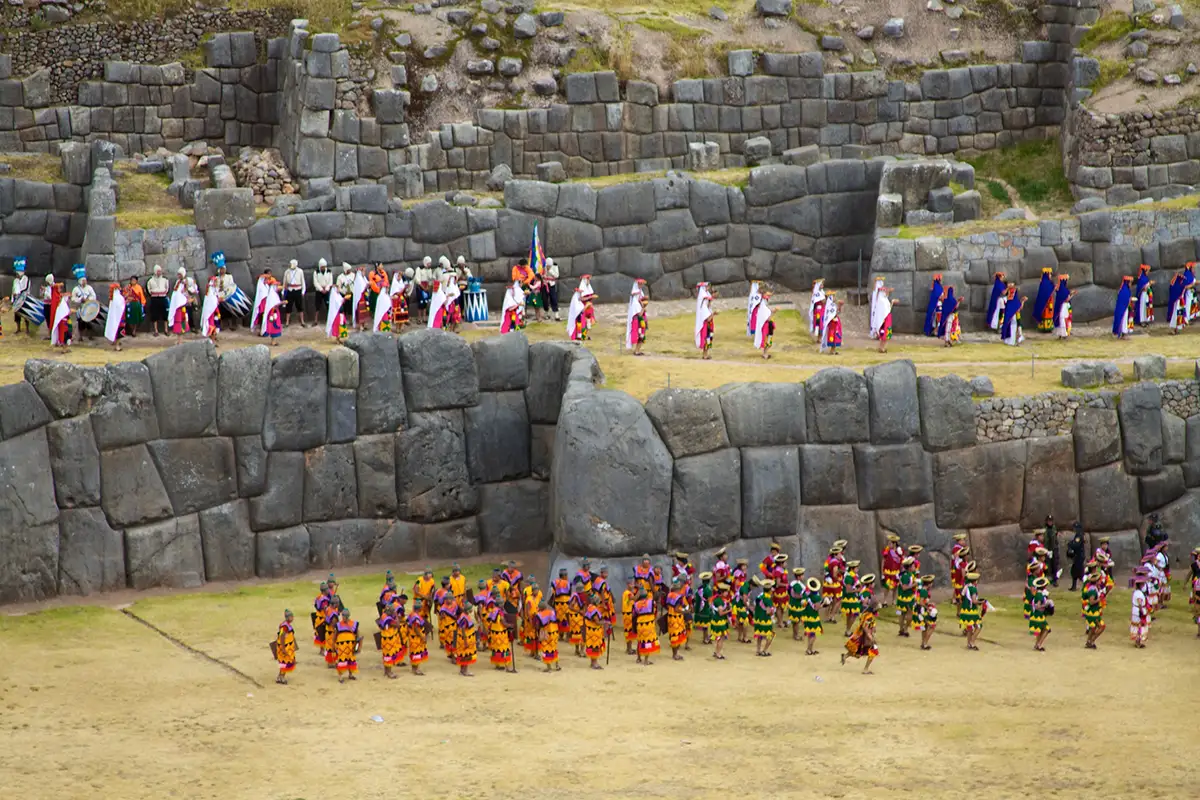
Witness the mesmerizing spectacle as participants gather at the historic Sacsayhuaman archaeological site. Photo by McKay Savage from London, UK, under the CC BY 2.0 <https://creativecommons.org/licenses/by/2.0> license, via Wikimedia Commons
The ten attractions listed above are some of the most impactful and must-see sites that Cusco has to offer. Of course, there are many more activities and sights in and around Cusco for the curious and intrepid travelers.
For personalized recommendations and trip planning assistance, don't hesitate to ask us about the best things to do in Cusco!
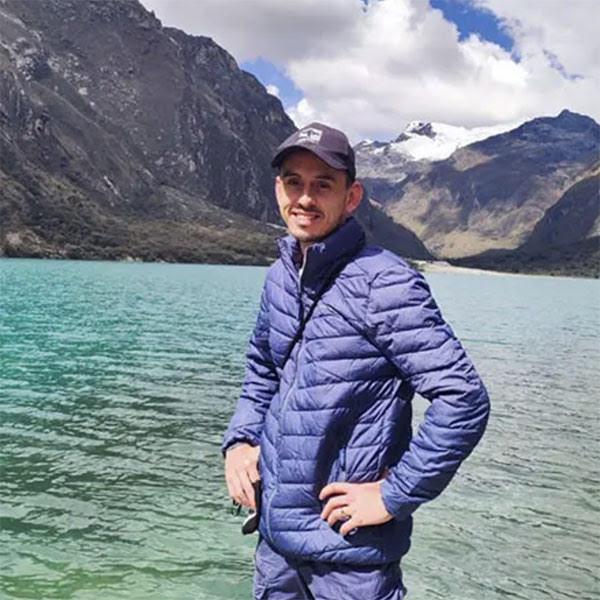
Dean is a South African animal lover, travel enthusiast, and writer. He worked as a safari guide in Kruger National Park for 27 years. Following his heart, he moved to Peru to be with his wife. Dean's passions include animals, tourism, writing, graphic design, and web development. In his free time, he enjoys movies, books, and spending time with friends and family.
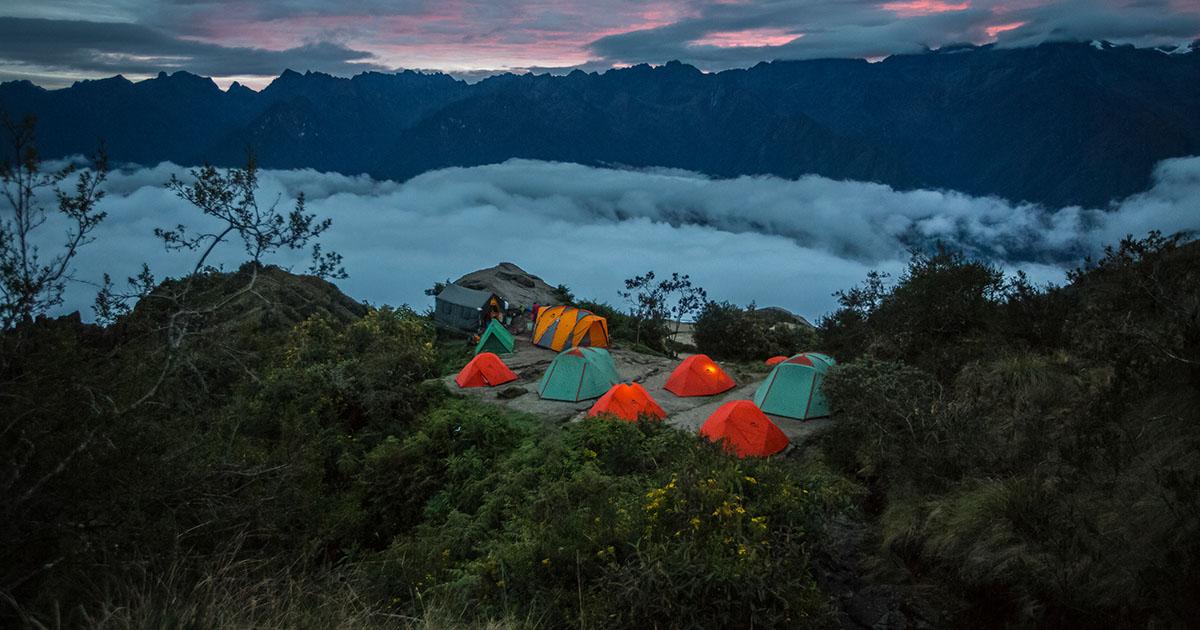
Peru has so many incredible hiking trails that it’s difficult to narrow the best treks in Peru to just ten. No matter where you are hiking in the Andes Mountains, it is sure to be rewarding. From the deepest canyons to Inca trails and the Cordillera Blanca. Azure lakes, mountain vistas, Inca ruins and remote Andean villages are sure to amaze. Here are the top ten multi-day Peru hikes.

Every year on June 24th, the city of Cusco comes alive with Inti Raymi, the Festival of the Sun—one of the most important celebrations in Inca tradition.